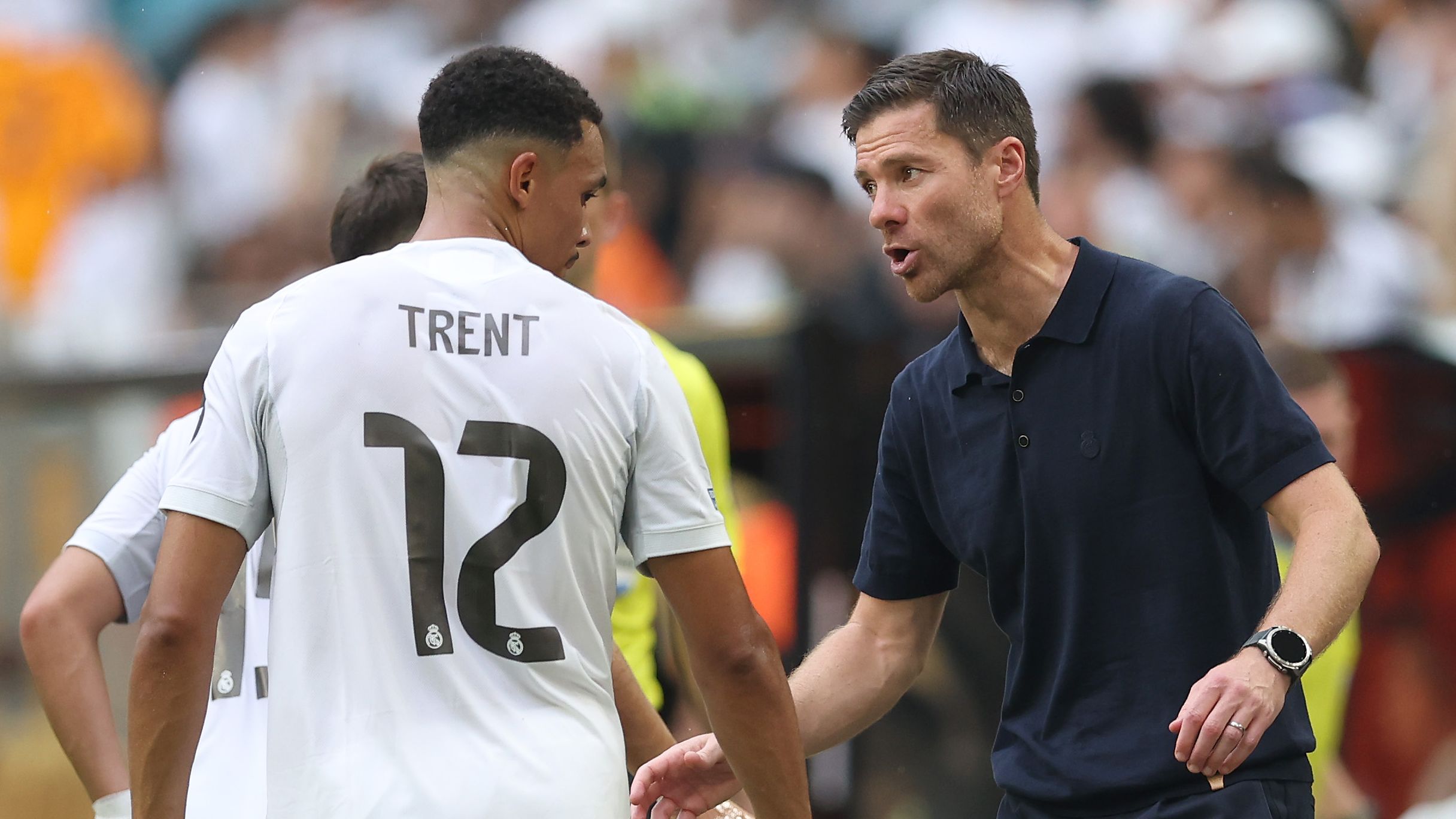Real Madrid full-backs told to go on the front foot
Real Madrid full-backs need to rediscover their bite, according to new head coach Xabi Alonso, who has mapped out an aggressive, high-octane plan designed to rectify the tactical drift Carlo Ancelotti highlighted during his final months at the Bernabéu.
Alonso’s manifesto for Real Madrid full-backs
The former midfield maestro has made no secret of his belief that Real Madrid full-backs are central to the club’s attacking DNA. In his first media briefing since taking the reins, Alonso outlined three non-negotiables: relentless forward runs, assertive defensive duels and instinctive combination play with wingers.
“I want our wide defenders to think like midfielders with the ball and like centre-backs without it,” he said. “That means stepping higher, winning second balls and flooding the half-spaces. We can’t afford to be passive for a single phase.”
Learning from Ancelotti’s warnings
Alonso’s comments carry added weight because they address an issue Ancelotti repeatedly flagged last season. The Italian lamented how Real Madrid full-backs often retreated into a flat back four, leaving Vinícius Júnior and Rodrygo stranded against double teams. Alonso aims to flip that script by demanding overlapping runs that pin rival wingers deep and create numerical superiority in the final third.
Spotlight on Trent Alexander-Arnold
The most eye-catching subplot involves Trent Alexander-Arnold, heavily linked with a switch from Liverpool. Alonso views the England star as a fulcrum who can invert into midfield, spray diagonals and still surge to the by-line. “Trent’s passing range is unique. If we can harness that while sharpening his one-v-one defending, we add a new dimension,” Alonso explained.
Competition for Ferland Mendy and Fran García
Current incumbents Ferland Mendy and Fran García have welcomed the fresh demands, but minutes will be earned, not gifted. Mendy’s ball-progression metrics dipped last term, while García’s crossing accuracy hovered below 20 %. Both understand that Alonso wants immediate improvement. “We’re ready to embrace the challenge,” García told club media. “The badge demands constant evolution.”
Why aggressiveness matters to Real Madrid full-backs
Alonso’s tactical blueprint borrows from his successful stint at Bayer Leverkusen, where inverted full-backs underpinned quick rest-defence transitions. By pushing his wide defenders higher, Madrid can lock teams in, regain possession instantly and reduce the long-ball threat that has hurt them in recent Clásicos.
The numbers back him up: last season Madrid averaged 3.1 players in the opposition box when crossing, compared with Manchester City’s 4.6 and Liverpool’s 4.3. Alonso wants that figure north of four, insisting it’s impossible without sustained width from proactive full-backs.
Physical preparation and positional drills
Pre-season double sessions are already focused on repeated sprint training and positional rondos. Assistant coach Sebastián Parrilla runs tailored drills in which full-backs start high, burst inside to receive a wall pass, then break wide again to deliver whipped crosses. The goal is to ingrain muscle memory so these movements become second nature on match day.
Tactical tweaks: inverted versus overlapping roles
Alonso will alternate between inverted and traditional roles depending on opposition shape. Against deep-lying sides, Real Madrid full-backs may operate in midfield, similar to Pep Guardiola’s hybrid system. When facing high-pressing teams like Barcelona, they will hug the touchline to stretch the field, giving Luka Modrić and Jude Bellingham more time on the ball.
Alexander-Arnold’s potential impact
Should the Liverpool vice-captain arrive, he’ll likely slot on the right with the licence to orchestrate play from a half-back pocket. That fits Alonso’s philosophy: attack through the lines, defend with compact triangles. Club insiders believe the deal hinges on Liverpool’s pursuit of a replacement, but Madrid remain confident after positive talks with the player’s camp.
What success looks like for Alonso’s system
The benchmark is simple: more goals and fewer counters conceded. Analysts inside Valdebebas estimate that if Real Madrid full-backs contribute a combined 12 league assists—four more than last season—La Liga’s title race could tilt decisively in their favour. The added offensive thrust should also help break down low blocks, Madrid’s Achilles heel during frustrating draws with Girona and Real Sociedad.
Dress rehearsal at the Club World Cup
Madrid’s next competitive fixture, the FIFA Club World Cup semi-final, offers an ideal proving ground. Expect Alonso to deploy both Mendy and García from kick-off, instructing them to press high and flood the box. Any nerves will be soothed by Toni Kroos’s metronomic passing, but the onus remains on the full-backs to turn possession into penetration.
Fans back the bold approach
Supporters starved of swashbuckling wing play since the Marcelo-Carvajal peak are eager for change. Social media polls show 78 % of Madridistas favour “more risk-taking full-backs,” while supporters’ groups have praised Alonso’s clear communication.
Conclusion: A high-stakes evolution
Alonso’s blueprint is bold yet rooted in club tradition. Real Madrid full-backs have always been catalysts, from Roberto Carlos to Marcelo. If Alexander-Arnold signs and existing options raise their game, Madrid could unlock torrents of goals while shoring up defensive transitions. Failure, however, would leave the flanks exposed and critics sharpening their knives.
Opinion: Alonso’s insistence on aggression feels like the right medicine for a team that occasionally drifts into comfort mode. The personnel are there; the mentality now matches the badge. If the full-backs buy in, Real Madrid’s wings could soon be clipping rivals once again.
Your global gateway to nonstop football coverage:
News Goal
Share this content:

